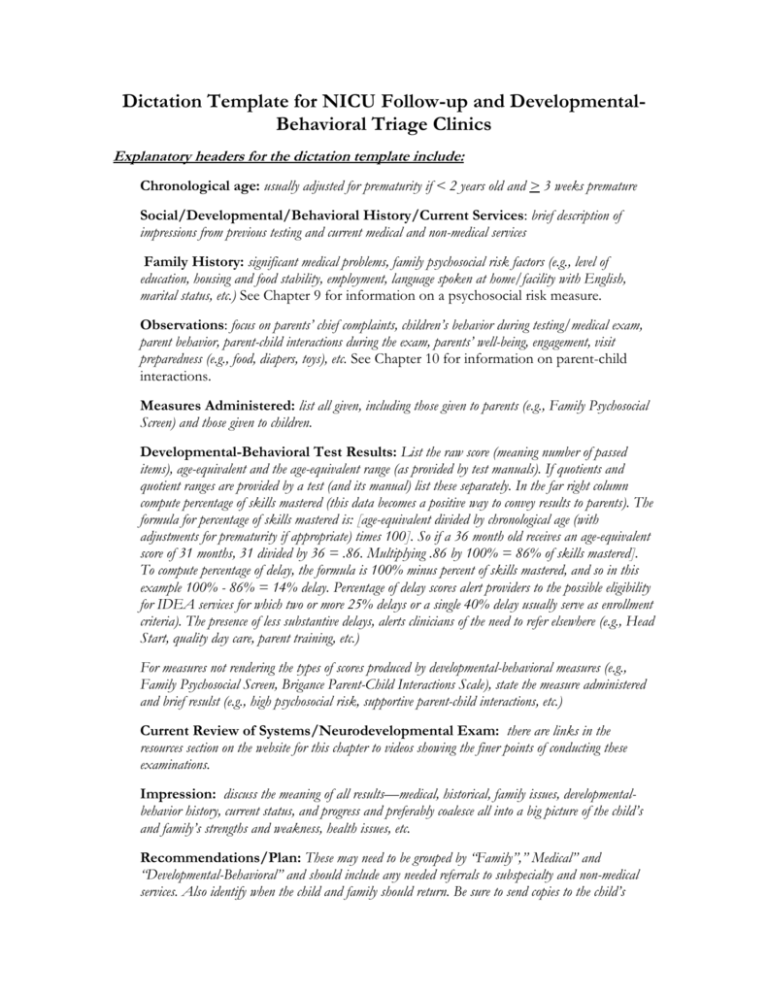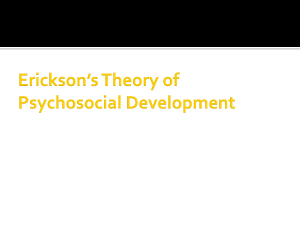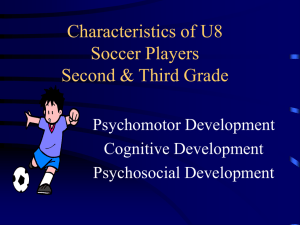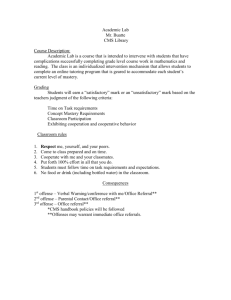Dictation Template
advertisement

Dictation Template for NICU Follow-up and DevelopmentalBehavioral Triage Clinics Explanatory headers for the dictation template include: Chronological age: usually adjusted for prematurity if < 2 years old and > 3 weeks premature Social/Developmental/Behavioral History/Current Services: brief description of impressions from previous testing and current medical and non-medical services Family History: significant medical problems, family psychosocial risk factors (e.g., level of education, housing and food stability, employment, language spoken at home/facility with English, marital status, etc.) See Chapter 9 for information on a psychosocial risk measure. Observations: focus on parents’ chief complaints, children’s behavior during testing/medical exam, parent behavior, parent-child interactions during the exam, parents’ well-being, engagement, visit preparedness (e.g., food, diapers, toys), etc. See Chapter 10 for information on parent-child interactions. Measures Administered: list all given, including those given to parents (e.g., Family Psychosocial Screen) and those given to children. Developmental-Behavioral Test Results: List the raw score (meaning number of passed items), age-equivalent and the age-equivalent range (as provided by test manuals). If quotients and quotient ranges are provided by a test (and its manual) list these separately. In the far right column compute percentage of skills mastered (this data becomes a positive way to convey results to parents). The formula for percentage of skills mastered is: [age-equivalent divided by chronological age (with adjustments for prematurity if appropriate) times 100]. So if a 36 month old receives an age-equivalent score of 31 months, 31 divided by 36 = .86. Multiplying .86 by 100% = 86% of skills mastered]. To compute percentage of delay, the formula is 100% minus percent of skills mastered, and so in this example 100% - 86% = 14% delay. Percentage of delay scores alert providers to the possible eligibility for IDEA services for which two or more 25% delays or a single 40% delay usually serve as enrollment criteria). The presence of less substantive delays, alerts clinicians of the need to refer elsewhere (e.g., Head Start, quality day care, parent training, etc.) For measures not rendering the types of scores produced by developmental-behavioral measures (e.g., Family Psychosocial Screen, Brigance Parent-Child Interactions Scale), state the measure administered and brief resulst (e.g., high psychosocial risk, supportive parent-child interactions, etc.) Current Review of Systems/Neurodevelopmental Exam: there are links in the resources section on the website for this chapter to videos showing the finer points of conducting these examinations. Impression: discuss the meaning of all results—medical, historical, family issues, developmentalbehavior history, current status, and progress and preferably coalesce all into a big picture of the child’s and family’s strengths and weakness, health issues, etc. Recommendations/Plan: These may need to be grouped by “Family”,” Medical” and “Developmental-Behavioral” and should include any needed referrals to subspecialty and non-medical services. Also identify when the child and family should return. Be sure to send copies to the child’s primary care provider, the parents’ health care provider if needed, to all services currently engaged with the child and family, and to educational services—both current or recommended. Dictation Template Clinic/Address Patient: Date of birth: Date of visit: Chronological age Parent(s) Name(s): Address: City, State, zip: Telephone: Email address: Chief Complaint: History of Present Illness: BIRTH HISTORY/MEDICAL HISTORY: BIRTH WEIGHT: DISCHARGE WEIGHT: GESTATIONAL AGE AT BIRTH: APGAR SCORES: BIRTH STAY #DAYS: VENTILATION DAYS: IMAGING: Other: Interim Medical History: Ophthalmology: Audiology: Pulmonary: GI/Nutrition: Other: SOCIAL/DEVELOPMENTAL/BEHAVIORAL HISTORY AND CURRENT SPECIAL EDUCATION AND SUBSPECIALTY CARE: FAMILY HISTORY: CURRENT REVIEW OF SYSTEMS: General: Eyes: ENT: CV: RESP: GI: GU: MUSCULO: SKIN: NEURO: ENDO: ALLERGY/IMMUN: HEME/LYMPH: SLEEP: DIET: IMMUNIZATION STATUS: CURRENT MEDICATIONS: NEURODEVELOPMENTAL/PHYSICAL EXAM: Weight: kg, Weight %, Length:, Height % OFC: OFC%: General: HEENT: Lungs: CV: Abdomen: GU: Musculoskeletal: Spine: Extremities: Skin: Neurologic: TONE: MUSCLE MASS: STRENGTH: DTR'S: CLONUS PRESENT: PRIMITIVE REFLEXES: ATNR: Tonic labyrinthine: Moro: PROTECTIVE REFLEXES: SITTING: Anterior: Lateral: Posterior: PARACHUTE: CLINICAL OBSERVATIONS: MEASURES ADMINISTERED: DEVELOPMENTAL-BEHAVIORAL TEST RESULTS: Raw Score Age-Equivalent Range Percent Delay Gross Motor: Fine Motor: Expressive Language: Receptive Language: Cognitive Academic Self-Help: Social-Emotional: IMPRESSION: RECOMMENDATIONS/PLAN: __________________________ Quotient Range Percent Skills Mastered Provider Cc:







